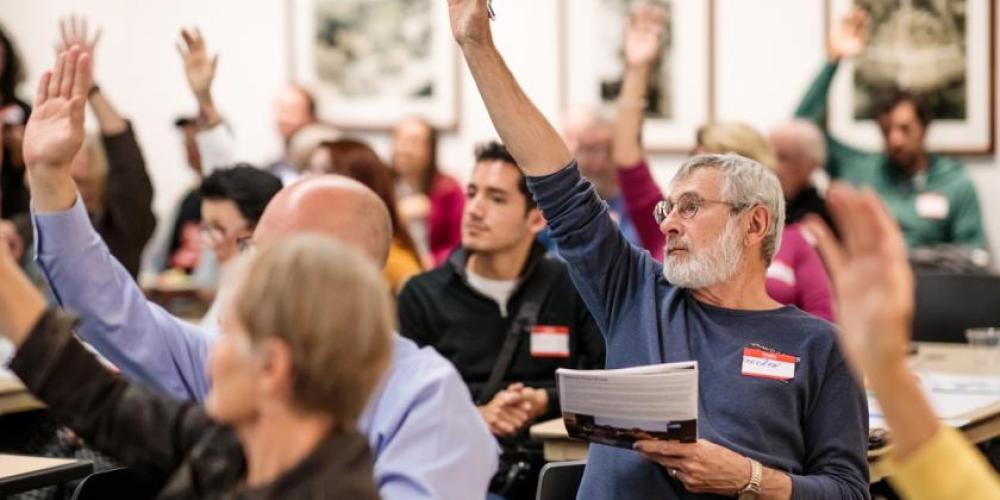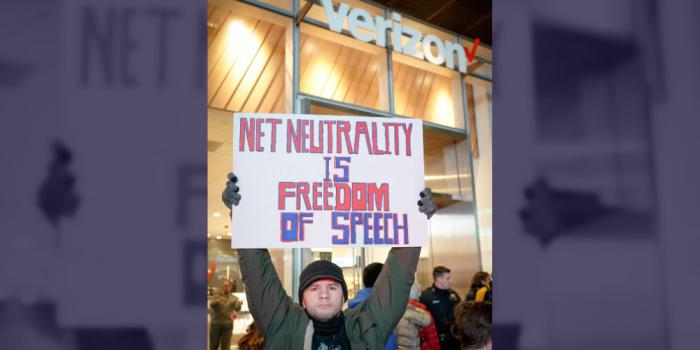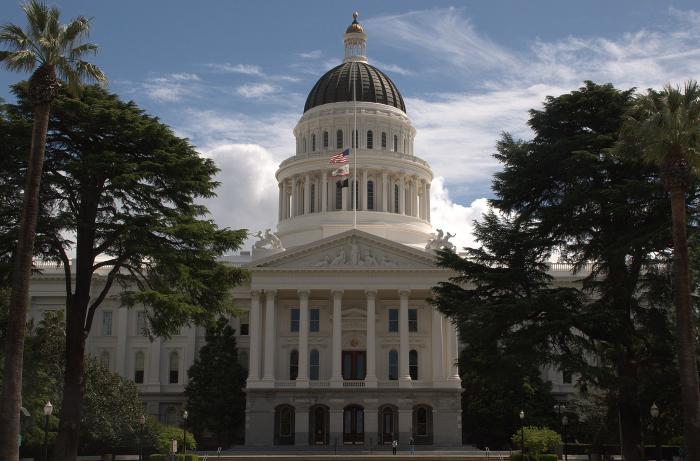Policymakers and Others Respond to the Local-News Crisis

Three years ago, when Free Press Action launched a grassroots campaign to create the New Jersey Civic Info Consortium — which would use public funds to revive, strengthen and transform local news — the idea was met with skepticism from journalists and policymakers alike.
Journalists, by and large, were uncomfortable with the idea that the state should play any role in subsidizing the news. Policymakers, for their part, hesitated to delve into an issue they believed their constituents didn’t care about.
An outpouring of public support helped shift the conversation, and in 2018 led to the historic passage of the Civic Info Bill, legislation we conceived to establish the consortium. And in 2019 — which we predicted would be “the year that governments finally step up to address the local news crisis” — the public and policymakers across the country took notice, acknowledging that the government can and must help ensure that communities have access to independent, local, public-interest reporting.
Responses to a crisis
The decades-long decline in legacy newspapers reached red alert in 2019.
It was the year that two of the biggest chains merged into one international conglomerate, creating an uncertain future for the coverage of hundreds of communities across the country. It was also the year the historic Chicago Defender ceased print publications and the 150-year-old Youngstown Vindicator closed, along with Spanish-language papers in L.A. and Chicago and countless other dailies and weeklies. And it was the year that faux local-news websites proliferated to circulate right-wing propaganda masquerading as facts.
The terms “death knell” and “apocalypse” were used to describe the state of the industry.
This ongoing market failure is leading cities, states and the U.S. Congress to take action. Here are a few of the ways elected officials stepped up to support local news in 2019:
- Rep. Mark DeSaulnier (D–California) introduced a “Save Local News” package of bills. DeSaulnier described how, in his political career, he’s witnessed dwindling resources for watchdog reporting: “I went from answering really intelligent questions to having to tell reporters where they could find things on the county website.” The text of the resolution that accompanies the policy package states, “it is in the best interests of Federal, State, and local governments to make all possible efforts to ensure the continuation of robust local digital and print news sources.”
- Tucked into a spending bill Trump signed in December is the Save Community Newspaper Act, which allows privately owned publications to defer contributions they make to their employees’ pension funds. Seattle Times publisher Frank Blethen led lobbying efforts for the bill, and the paper’s editorial board wrote that the relief “means the difference between an imminent bankruptcy threat and a fair shot at long-term stability.”
- Massachusetts legislators proposed H.181, a bill to study the crisis facing journalism across the state and explore public policies and other solutions. In an Op-Ed, the bill’s authors, Rep. Lori Ehrlich and State Sen. Brendan Crighton, express their concern that a growing number of communities lack local journalism. “Local news outlets serve as anchors of our communities, providing accountability and a common community narrative for readers … Without them, at a time when ‘fake news’ is the mantra and facts are under attack, our communities will suffer.”
- In October, following the abrupt announcement that Verizon would close its Fios1 local-news network, New York lawmakers introduced a bill that would require cable companies to provide independent, locally produced news as part of their basic service plans.
- At the municipal level, New York City Mayor Bill de Blasio signed into law a requirement that at least half of city agencies’ print and digital ad spending be dedicated to community and ethnic media — a significant financial investment that publishers of the city’s small local outlets have long called for.
- In Denver, where Alden Global Capital has slashed the staff of the Denver Post since acquiring the paper in 2011, the City Council unanimously passed a resolution urging the hedge fund to either invest in its newspapers “so that they may more expansively perform their role in the community” or sell them “to civic minded entities that will take up that duty.” Elected officials were following the lead of the Denver Newspaper Guild, whose members have raised the alarm for years about how hedge-fund owners have decimated local reporting.
These resolutions and proposals are hopeful signs that elected officials are willing to take action in support of local news. But it’s worth noting that many of these policy solutions, particularly at the federal level, cater to the interests of the news-industry lobby rather than those of journalists, innovators working to address reporting gaps and — most importantly — communities harmed by the decline of local journalism.
Growing calls for public funding
A growing number of community stakeholders are joining the conversation, and throwing their support behind public policies designed to sustain and strengthen local news.
Not long ago, First Amendment lawyer Steven Zansberg was reluctant to support public funding for journalism. He now sits on the public-policy working group of the Colorado Media Project, which put out a report last fall calling for policies, including public-funding mechanisms, to revitalize local news in the state.
Upon the paper’s release, Zansberg told a room full of journalists in Denver that “the status quo is in crisis.” He noted that the main concern reporters have about public funding for news — state interference in a free press — is valid, but by no means insurmountable.
“That wall between editorial independence and funding exists regardless of who’s doing the funding,” he said, referencing nonprofit outlets supported by big corporations and commercial media sustained by ad sales. No matter the revenue source, nonprofit, commercial and government-funded outlets alike have proven it’s possible to maintain their editorial independence. The dangers of doing nothing to save local news, he said, outweigh the challenges of implementing public policies that could sustain a free press.
Colorado Media Project was one of several organizations in 2019 to study the crisis facing local news and conclude that expanded public funding is a key part of the solution. After the announced closing of the Youngstown Vindicator, Policy Matters Ohio researched how media mergers are affecting news for communities across Ohio, and outlined steps the state can take to reverse the crisis. In a major report assessing local reporting around the country, PEN America recommended federal policies to strengthen local news.
All of these reports call for expanded public funding for local media, and point to Free Press Action’s proposed ad tax on tech companies like Facebook and Google as a funding source worth exploring.
It’s not just policy institutes that are pushing for government action.
Local organizing efforts in Massachusetts — much of it led by our allies at the Boston Institute for Nonprofit Journalism (BINJ) — are engaging the public on the proposal to form a commission to study local news. At a July hearing, the statehouse room was packed with members of the public, reporters, newspaper publishers and journalism students, as well as Free Press Action’s Heather Franklin, whose testimony suggested ways to strengthen the proposed commission. One after another, local reporters described their struggles to cover their communities with dwindling resources.
In the words of BINJ Executive Director Jason Pramas, such a commission should focus less on examining the forces destroying local news — as those have been thoroughly documented — and more on “figuring out the best possible model for the state government to fund community journalism.”
Affected communities need to be at the table
In just a few short years, there’s been a dramatic shift in the conversation about the role public policies can play in the future of local news. Elected officials from all parties, academics, journalists, and — most importantly — members of the public are beginning to align around the idea that something must be done.
As this conversation evolves, we’d like to see much more weight given to people impacted by the fate of local news — and more solutions focused on fostering informed and engaged communities, not on simply stemming the evisceration of traditional newsrooms.
Because while Congressman DeSaulnier’s legislative package is titled “Save Local News,” it bears asking what is worth saving. Many of the newspapers lobbying for government help long ago lost the trust of their communities as they exploited harmful stereotypes, neglected low-income audiences, or cut local reporting resources in an effort to scale.
As more people join the call to strengthen local news, this is our hope: that 2020 will be the year community members have a say in what the future of news looks like, and lead the way to make that vision a reality.





